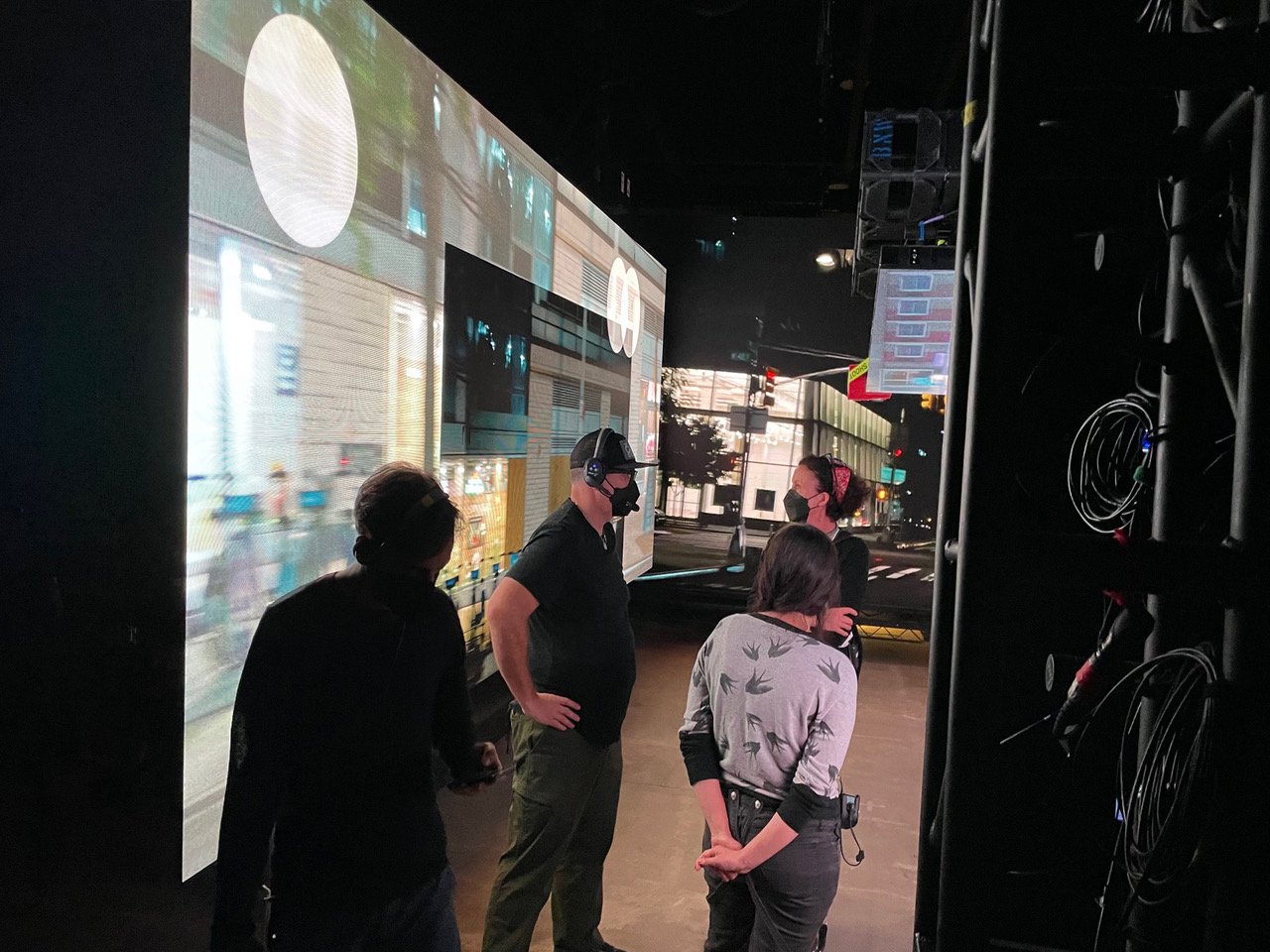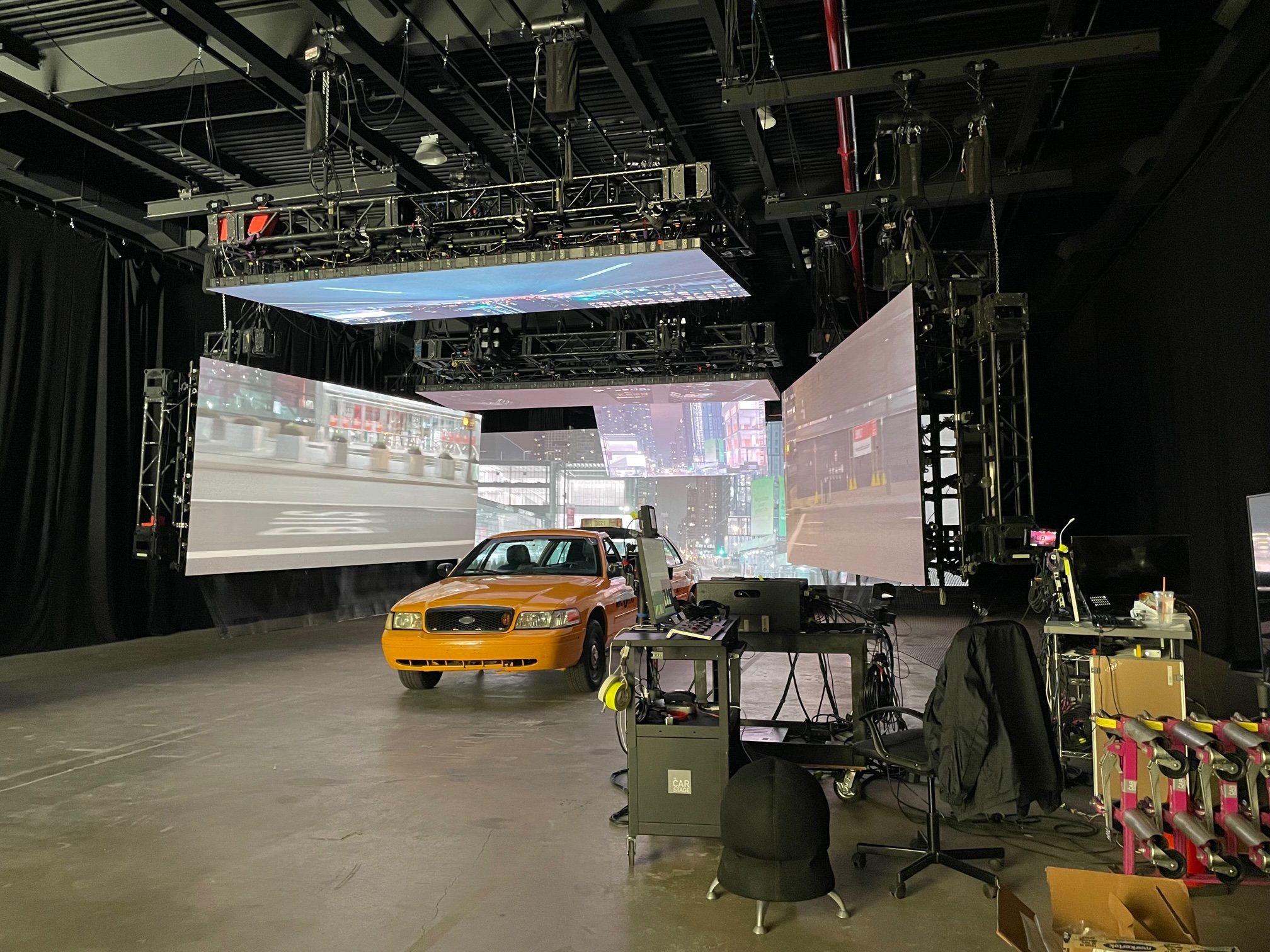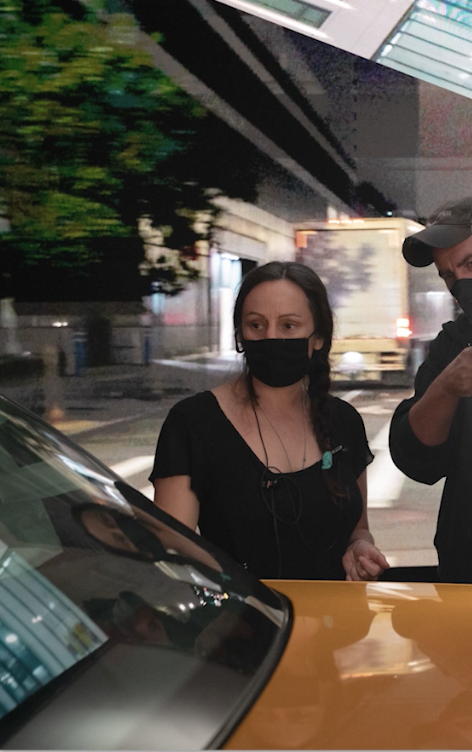Natasha Braier, ASC, CDF Q&A: Shooting Driving Scenes for She Said at Carstage
Cinematographer Nastasha Braier, ASC, CDF (The Neon Demon, Gloria Bell, Honey Boy), speaks
to lessons learned during her first-time filming on a virtual vehicle process stage. A mid-
production decision brought the crew of the investigative journalist drama She Said (produced
by Plan B/Anapurna/Universal) to Carstage in Long Island City where Braier quickly developed
innovative ways to make the most out of their shooting day. She Said was one of the early
feature films to shoot at the New York LED stage, which services production throughout
planning, content preparation, LED panel positioning, live on-set programming and color
correction.
What made you go to Carstage?
Natasha Braier: It was a production decision. We had to do some car work for a scene where
they go to the Hamptons, but it was not possible in our schedule to dedicate a day to go all the
way there to do process trailer. We had to think about alternatives. I thought the film had to
be realistic and truthful to reality. So we tried to shoot it in a way that it also felt very real. I
didn’t want to do green screen. Even if you can do a very good green screen; it just didn’t feel
right with the rest of the approach. So we thought of doing it at the Carstage.
Was this your first-time filming on a LED Stage like this?
I had shot some virtual stage work for commercials before but it was my first experience at
Carstage. This time the movie scene needed to be integrated with the rest of the film, which in
this case is very, very naturalistic and real. It was a different type of challenge.
Did you shoot your B-roll or were you able to use stock footage?
No, Third Law Productions/PlatePros shot those roads at the Hamptons. We found locations in
the map that seemed right in terms of orientation and lengths, and they went and shot that.
And then, for the exterior night in Manhattan and Brooklyn Bridge, they also shot it for us.
What was your learning curve like with Carstage? Did you have to spend some time playing
with it first or could you walk right in?
I had done a little bit of LED work, but only commercials or music videos where it’s in and out, a
bit experimental. The tricky thing here was to make sure that it’s at the same level of reality as
the rest of the movie. We didn’t have time to prep. This decision happened in the middle of
production. I came in on a Saturday and played a little bit just to familiarize myself with the
setup that they had there. We took a camera and shot for a couple of hours. I learned as much
as I could from that test.
I figured out how the size of the screens, with the type of shots that I needed to do in the car,
would dictate a certain angle, a certain position of the screens and a certain closeness from the
screen to the cars. That didn’t leave a lot of room for us to light the talent with any other extra
lights, as I’ve done in the past with other systems. If I wanted to add my lights, I would have had
to correct my lights a lot.
What did you do when suddenly faced with this lighting challenge?
We devised a way in which we created the lights inside the screen. The characters would be lit
by the screens. For example, when you shoot a profile, you would have the screen with the
footage there, right? The actress is a bit backlit by those images in the on-camera screen, but at
the same time she also has the other off-camera screen in front, front-lighting her. Everything
in the on-camera screen that was in shot was driving footage. Everything else that was still
screen, but not in the shot, became my lighting.
If there was too much front light, I would make half of the screen black, like a black flag. Then
instead of adding lights, I would create lights. Literally, where I would have put a fluorescent or
an LED panel, I would just get the technician to draw a white rectangle, and that became my
white light. We would see how much light the actress was getting, and if it was too strong, they
would make the rectangle smaller and do other tricks like that. Imagine a rectangle with a
lightened exposure, that still has a little bit of the transparency of the image. Then if there’s
trees passing, that light is still in movement. We were grabbing areas and making them brighter
or darker to create the lighting using the LED screens.
It was really fun to start to play using the image as a lighting source. We started drawing black
squares, black rectangles, and white rectangles. For the night scenes, the whole scene was of
course much darker so there was less light impact from the screen on the characters. The sky
was too dark for the same strategy to work. Even if there was street lighting, the camera that
captured the original location didn’t usually capture the lighting source.
Can you give us an example?
For example, the characters are driving on 11th Avenue and I wanted to have these sodium
lights passing. To create that effect, we would draw these orange balls that would track with
the footage. You have a building that is moving and we would draw these orange balls of light
just out of frame. Then the balls would light the actress while we controlled the intensity and
the intervals.
Once I figured out what we could do, we just started to draw the rest of the lights. We figured
out the color, the intensity, the pattern. The technician programmed the rest of the footage
and kept drawing all the lamps. If it was too many lamps, we could kill some of them. Or if we
needed it in some moment that it was too dark, we could say, “Oh, can you just add another
light?” That was really crazy.
Even though it was a big movie, it was a tight budget for all the stuff that we had to do. I barely
had that day of prep, but it would have been really amazing if you had a bigger project, and you
had more time. You could design the entire lighting, the one minute of driving, just do whatever
you want, because you’re drawing everything that happens in every moment.
Did working with the LED screens effect the actors in any way? Did you have to place them to
go with the light differently?
I don’t think it effected them. The good thing was that the prior day, that one day of prepping
and figuring it out, made things faster on the day, because I knew I didn’t need to add any film
lights. Plus I knew, ‘okay, here we need the rectangle, we need the bigger rectangle...’ We were
prepared and we had more or less a preset for every different situation. It wasn’t totally
finalized, but we had a good draft to start with and look at our in rehearsal before calling the
actors and making some tweaks.
I think it was great for the actors because even if you are in Carstage and you’re not really
driving a car for real, when you are in that environment and everything is moving around you in
the screens, it feels a lot more interactive than just doing a green screen. For the camera it’s
great, because you get the lighting changes. You get the interaction with the glass and all the
surfaces of the car. It’s all very, very real. But I think also for them and for their experience, it’s
one step more real than the green screen.
Did you also do any traditional driving scenes or were you able to get everything at the
Carstage?
I think we did everything at the Carstage. There weren’t that many. That was also a budgetary
decision. You save so much time if you can do it all there. You just have the extra work of
providing yourself with good plates, which is a whole thing. But once you have that, it can be
very time efficient.
If you’re going to do another project, with more prep time, what would you change?
I think if I could do it perfectly, I would want to do the plates myself on quality Alexa. There
were some issues with the kind of color space and contrast that were challenging... Once you
get in the stage and you have a plate that has certain contrast levels and certain colors, and you
have real people and the Alexa capturing it all, that’s when we had the most tweaking. I had my
DIT on set and we were grading the plates as much as we could so that it would be in the right
space. If I had more time, I would have shot the plates on Alexa and spent more time grading
them properly before even going to the Carstage and making sure that the color space was
better.
But it looked good.
Yeah, it looked great. It’s just, if you look at the dailies, everything has a kind of magenta hue,
so we had to take that out.
That was also on the actresses which is why I decided to light the actresses with the LED panels.
If I was trying to use my lights, then it would have been very difficult. They would have been in
two completely different worlds. But because the lights were also the LED panels with footage,
then everything was in that same world... Then I could make a general correction.
Did that effect your relationship with the editing or the colorist?
No, because we really did everything we could to get it right on camera the day we filmed it. I
always rely on getting it right in camera. I’m old school, I’m used to shooting on film. I would
make sure that my DIT got the footage for the screens as good as it could be and then we did
the best kind of balancing that we could do on the day. What we’re seeing in the monitor we
know is going to work and then in the grade, we tweak a little bit and just make it a little bit
better. I would never want to rely on, ‘okay, this doesn’t look right, but I will fix it in post’ It’s
just not the way that I think.
Is there anything that you would advise others who are doing this?
I would definitely say–to help my fellow colleagues, it is very important that you get time to test
and to prep. This is not a situation where like fast food, you walk in with your car and you
switch the stuff on, you shoot your scene and go away. To have a good result, you need prep. I
was very fortunate that the people at the Carstage were so willing to prep, and my producers
understood the importance of this and made that possible. I came on the weekend, and we
spent a whole day getting ready. That’s why the one day that we had to do all the scenes was a
success. We finished on time and we did, I think, really cool stuff. But it would have not been
possible if we didn’t have that one day to prep.







